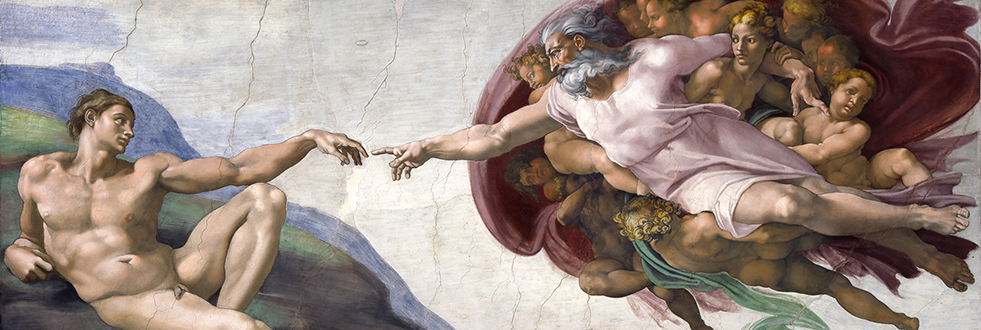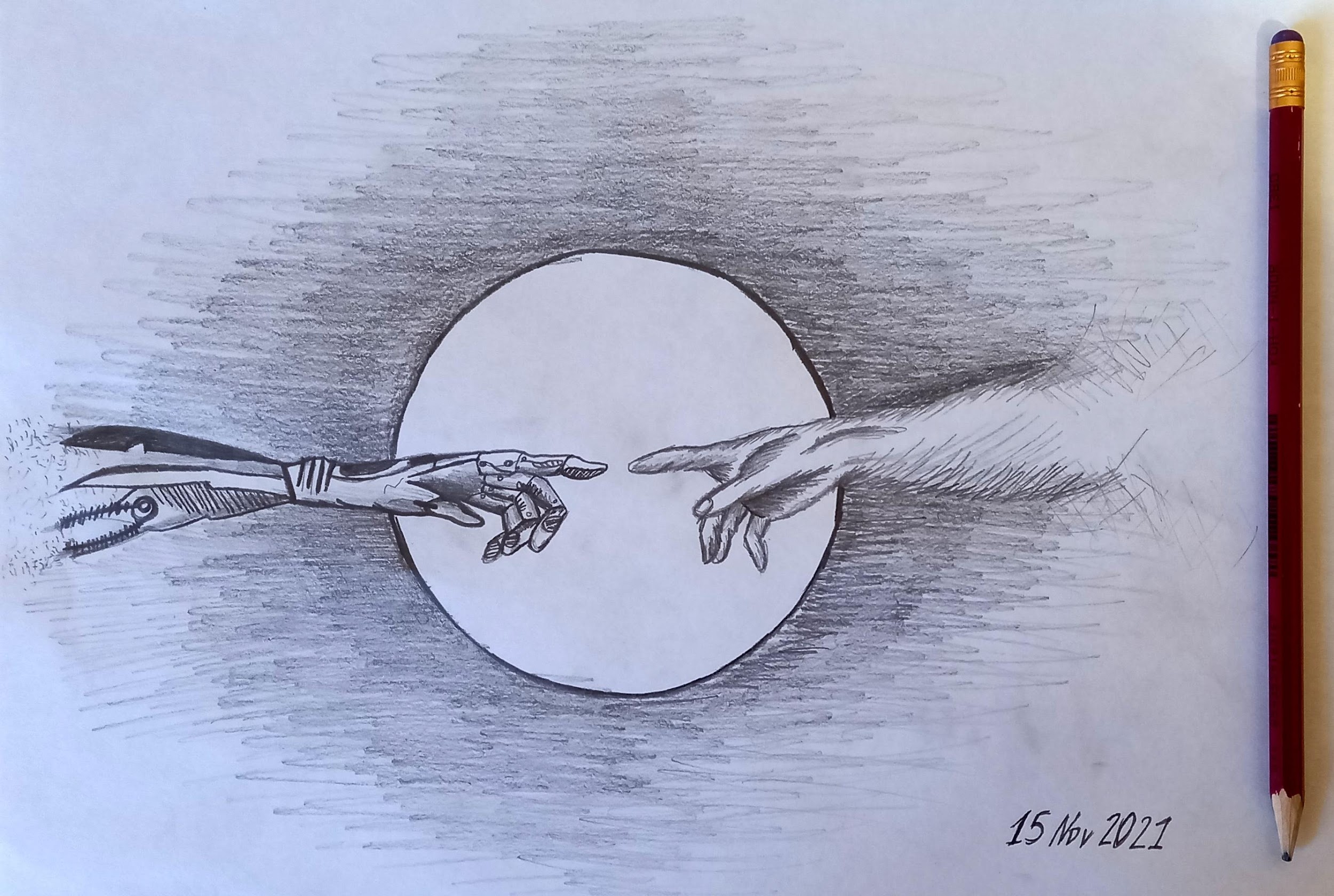Rethinking the past is beneficial for idea generation, so turning to the universally recognized masterpieces for inspiration is a common practice. The Creation of Adam by Michelangelo, one of the key tourist attractions of the Vatican, is among such thought-provoking pieces. This paper presents a drawing inspired by Michelangelo’s painting and analyzes the two works comparatively with attention to themes, the elements of design, and tools.
Inspiration Piece
The inspiration piece is one of Michelangelo’s signature works – The Creation of Adam. The approximate date of creation is between 1508 and 1512, and the place of origin is the ceiling of the Sistine Chapel in the Vatican City State (Buonarroti Simoni, 1508-1512). As Figure 1 demonstrates, the fresco painting aims to illustrate the story of humanity’s creation interpreted from the Book of Genesis and captures the moment when Adam receives the gift of life. Its underlying message has diverse interpretations due to some elements resembling the human brain and the uterus.

Student’s Art Piece
The art piece is a pencil drawing named When Machines Start to Think. The work shown in Figure 2 reflects on the life creation narrative by placing it in the context of modern realia and exploring humankind’s potential as “creators’ ‘ apart from giving birth to children. Specifically, the piece places humanity in the creator’s position, whereas advancements in robotics and artificial life stemming from the ongoing scientific progress are symbolized by the programmable robotic arm. The piece represents humanity’s emerging role in creating new life and the responsibility for any of its consequences. However, it should not be interpreted as the statement of people’s omniscience or omnipotence.

Connection
The pieces utilize different media but are closely intertwined thematically. Regarding thematic proximity, the drawing borrows the central element of Michelangelo’s painting, the touching hands, and uses it to explore what “life creation” might mean today if not tied to the religious worldview. In the original painting, God creates the first person in his likeness and image. Similarly, today’s researchers apply the knowledge of how the brain processes information and sends signals to the body to create advanced robotic systems that are pre-programmed or even capable of mimicking human thinking and behavior.
The development of humanoids that utilize machine learning and artificial intelligence technologies to learn to react just like humans is a prominent robotics field aside from industrial and medical robotics (Pagliarini & Lund, 2017). As for art media, Michelangelo’s masterpiece uses plaster and paint, whereas the student’s materials are paper and a graphite pencil. By causing the lack of color in the student’s work, this difference influences the degree of realism as perceived by the viewer. Finally, thin pencil strokes could make it easier to place accents and keep the theme’s depictions abstract and simplified.
The similarities and differences relate to multiple points of analysis, including themes, media, and design elements. Both pieces depict the touching hands as a metaphor for breathing life into inanimate objects and accentuate the link between the creator and the creation, but they are dissimilar in terms of art media. Also, both works use tone differences/shades to create an illusion of three-dimensional objects and have visual rather than actual textures. Other design elements also reveal numerous differences; Michelangelo uses horizontal or curved lines and irregular shapes, whereas the student’s piece features diagonal and horizontal lines and both circular and irregular shapes.
Regarding color and patterns, the inspiration piece uses diverse pastel colors and repeatable lines to represent clothing folds, whereas the student’s piece is monochromatic and features homogeneous horizontal lines in the background. For composition, in Michelangelo’s work, the left and the right parts represent different but relatively independent worlds, with the touch connecting them. The student’s work centers the touching fingers and accentuates this part by means of shades. Therefore, the pieces are rather different even though the drawing makes a clear reference to Michelangelo’s painting.
References
Buonarroti Simoni, M. L. (1508-1512). The creation of Adam [painting]. The Sistine Chapel, the Vatican City State. Web.
Pagliarini, L., & Lund, H. H. (2017). The future of robotics technology. The Journal of Robotics, Networking and Artificial Life, 3(4), 270-273. Web.